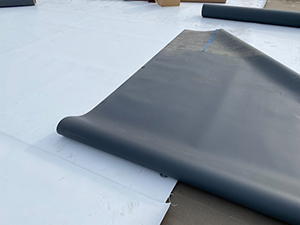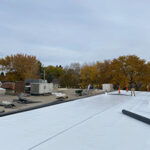
As with any industry, the commercial roofing industry has specific terminology not always understood by a layperson.
When you see your doctor, it is important you understand what the terminology means to better understand your diagnosis and options. The same is true for your roof. You must understand what your roofing contractor is saying in order to make knowledgeable, financially-sound decisions.
To improve your knowledge, here is a short guide to clarify some of the jargon regularly used in the commercial roofing industry. For more information, or to schedule a visit to your Nampa, ID business, please call our experts at High Country Roofing.
Membrane
A roofing membrane is a waterproof layer, usually made from materials like TPO, EPDM, or PVC, that shields your building from water and other elements. Understanding the kind of membrane your roof has will help you make informed decisions about repairs and replacements.
Flashing
Flashing is the material placed around roof features such as chimneys, pipes, and vents to prevent water leakage. Damaged flashing often leads to unwanted moisture entering the building, making timely repairs a necessity.
Deck

The deck is essentially the foundation of your roof, providing the surface upon which the other layers are installed. It’s generally made from metal, wood, or concrete and is one of the most critical structural components of your roof.
Insulation
This layer is sandwiched between the deck and the membrane, offering thermal resistance to keep the building cool in summer and warm in winter. Quality insulation can significantly cut down on energy costs.
Parapet
These are the walls that extend above the roof level and are often used in commercial buildings to serve both aesthetic and functional purposes, like providing a barrier to wind and spreading of fire.
Scupper
These are special openings in the parapet or the side of the building that allow water to escape, serving as a drainage system to prevent water accumulation on the roof.
Seam
This refers to the place where two sheets of roofing material join. Effective sealing of seams is crucial for preventing leaks.
Ballast
A ballasted system is not directly attached to the roof deck. Instead, it is held down by external sources such as gravel.
Understanding these terms will not only allow you to communicate more effectively with commercial roofing companies but also empower you to make educated decisions regarding the care and maintenance of your commercial roof. For all your roofing needs in Nampa, ID, High Country Roofing is just a call away at (208) 251-8203. Let us provide you with a roof that’s not just built to last but also tailored to your specific needs.
